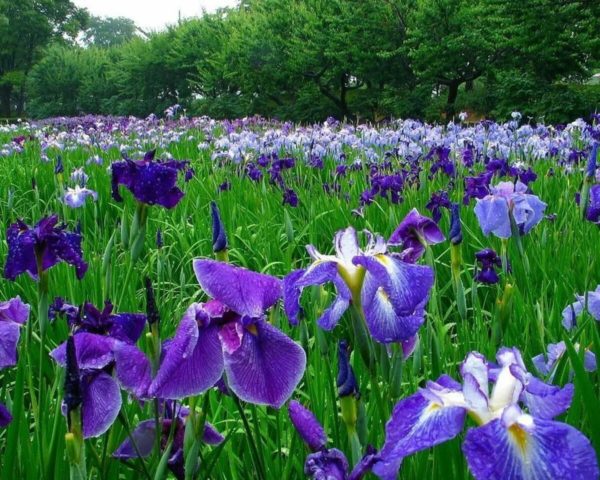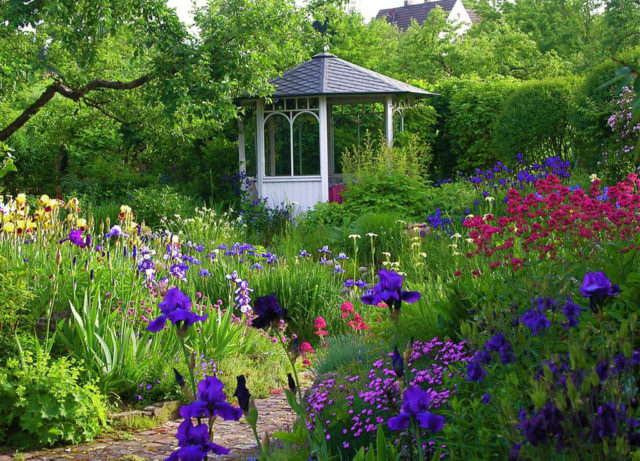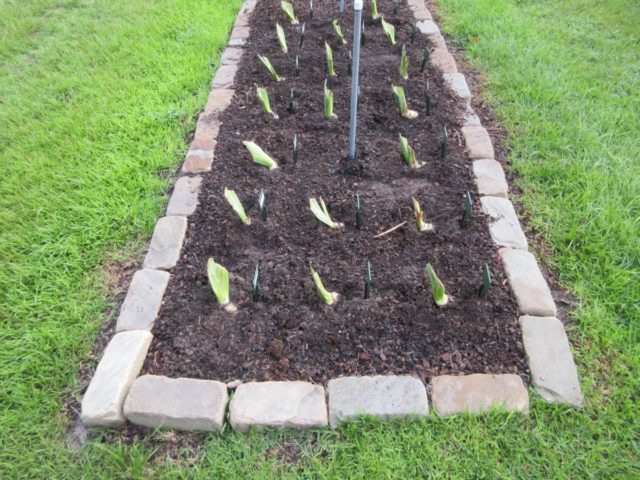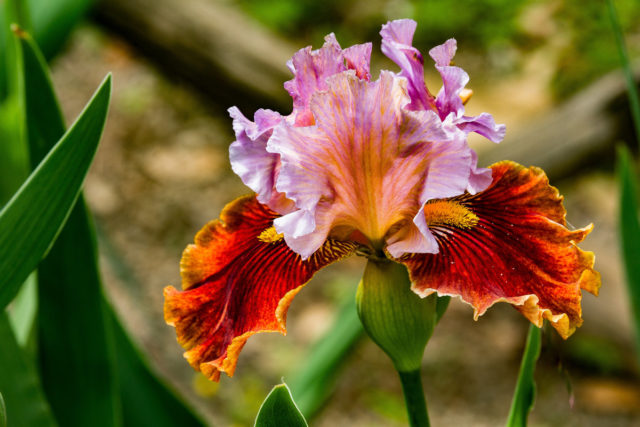Content
Planting irises in summer in open ground is done in order to have this blooming crop on its site by autumn. The timing depends on the type of flower. In any case, you need to prepare in advance for planting a plant - select the soil, planting material and choose the right place for comfortable development.
Dates of planting irises in summer in open ground

The timing of planting irises directly depends on their species.
Iris is a perennial crop with simple or branched stems. A sheet plate is located at its base. It can be flat or xiphoid. The buds are collected in inflorescences, but in some varieties they are located singly. The petals of the flower are organized into a kind of tube where the nectar is located.
The distribution area of irises is extensive. They can be found on all continents, except in areas where it is too dry or cold. The flowering of irises continues in summer for quite a long time. In the temperate climatic zone, the buds bloom in May and bloom in July.
At the moment, the genus of irises has more than 800 varieties, they have all kinds of shades and shapes. The culture has long gained popularity among gardeners, because it is unpretentious in care and looks great as a decorative flower in plots, parks and gardens.
Since irises reproduce very well vegetatively and quickly take root after dividing the bush, this procedure will not cause much trouble. Moreover, the culture must be transplanted periodically in order to renew it, because the root system of the plant after 5 years begins to grow too much or die off. Further, this will lead to the death of the entire bush.
Many gardeners prefer to plant irises in the summer, since it will be easier for them to adapt to the cold winter. In areas where autumn is quite warm, iris can be planted in September. A lot also depends on the type of plant. Experts believe that it is fashionable to plant Siberian iris varieties even in October. An important condition will be the end of the flowering period, after which the peduncle is carefully cut off and wait about 3 weeks.
Rules for planting irises in summer

Irises are often used in the summer to decorate summer cottages, since they are not demanding to care for.
For the harmonious growth and development of the plant, full flowering in the summer in the country or in the garden, it is required to properly plant irises. To do this, you need to decide in advance on the place, prepare the soil, clarify its pH, take care of the planting material. In addition, there are some more summer planting secrets that you need to know.
Site selection and soil preparation
The most important thing when planting irises is to choose the right place to grow comfortably. It should provide the flower with light and nourishment. This will allow the plant to bloom in the summer for a fairly long period of time. Irises love bright light, the shaded area will affect their growth. In addition, they must be protected from wind and drafts. The flower does not tolerate stagnant water and generally prefers dry soil. This applies to almost all varieties, with the exception of marsh iris.Therefore, you should not plant it where groundwater passes.
After choosing a location, you need to prepare the soil as follows:
- dig up in advance;
- treat against diseases and insect pests;
- it is advisable to apply herbicides against weeds.
Irises require loose, oily soil that is neutral in acidity. In this case, you should not add fresh manure to it, but you can feed it with compost and fertilizers.
Preparation of planting material
When preparing planting material before planting irises in the summer in the country, you need to pay attention to the following points:
- the root system should not be excessively dry;
- the large size of the rhizome is desirable - this will ensure rapid survival, growth and development;
- the roots should not show signs of fungal infections;
- vegetative buds must be present on the stem.
It is better to buy irises with a peduncle, this will allow you not to be mistaken with the choice of the desired shade. If there are already flowers more than 5 years old on the site, then you can propagate them by dividing, since they still need rejuvenation.
How to plant irises in summer

When planting irises in summer, the rhizomes should not go too deep into the ground.
It is known that irises have bulbous and rhizome varieties, so the process technology is different for them. Regardless of this, planting irises in open ground in the summer after flowering (shown in the video) is not a very difficult procedure.
Before planting, you need to carefully examine the bulbs. They should be uniform in color, dense and free from damage. Planting holes should be made no deeper than 7-8 cm, and the distance between them should be about 10 cm. Lay a layer of sand drainage at the bottom of each hole, then place the bulb in the center, easily press it into the ground. Lay a layer of soil on top and moisten it.
The rhizome must also be inspected before planting. Part of the root can be shortened, while the sections are treated with a solution of potassium permanganate. Planting holes should be made at a distance of 20-40 cm from each other. The root in the hole should be placed so that its upper part is slightly above the ground. Then sprinkle with soil and moisten thoroughly.
Irises can also be grown using seeds. Most often this is done at the end of summer, immediately after the end of flowering and collection of seeds. Or at the end of winter, first in a pot, then at the beginning of summer in open ground.
Follow-up care
When planting irises in summer in August, it is important to provide them with quality care. They are completely unpretentious, but they need the following conditions:
- Regular watering, preferably in the evening. You cannot overfill, but you should not allow the soil to dry out. Watering is necessary at the root.
- After two years of flower development in the open field, you can make top dressing. It would be correct to do this three times per season.
- One of the most important procedures is pruning. It is produced immediately after flowering.
- Preparing for the winter period. For this, the soil is mulched, thereby insulating the rhizomes. You can cover the plant with spruce branches.

Irises have a huge variety of varieties with many shades.
It is necessary to periodically inspect the flowers for diseases and pests, and if you suspect ill health, spray them with special preparations.
Professional advice
Experts in the field of flower cultivation pay attention to the fact that each variety of irises has its own requirement for moisture, so you should clarify its preferences in advance, even when buying a plant. But basically, you need to adapt to the irrigation regime on your own, looking closely at the needs.
For beginners in the field of floriculture, experts recommend Germanic varieties of irises, since all errors in the care and maintenance of these flowers are easy to correct.
It is wrong to think that if irises do not require special care, then they do not need feeding. Florists recommend feeding the culture in a timely manner, starting from three years. Apply the compositions strictly in liquid form so as not to burn the plant.
Conclusion
The planting of irises in summer is often carried out in August, after the flowering period. Many gardeners at this time collect seeds, prune, thereby preparing the crop for the winter season and lush flowering the next year. Irises bloom for a long time almost all summer, for which they enjoy the attention of many summer residents.








